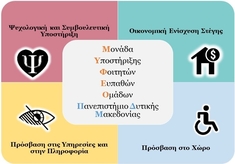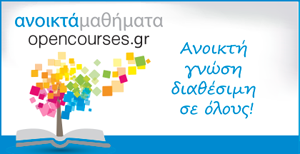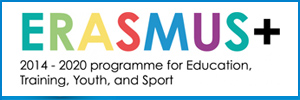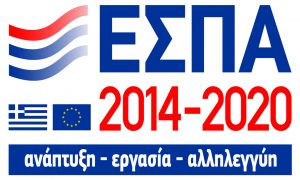Call for Proposals Vol. 29, No. 3 – ‘On Breath’
Call for Proposals
Vol. 29, No. 3 – ‘On Breath’
(April/May 2024)
Proposal Deadline: 10 October 2023
Issue Editor: Sozita Goudouna, Goldsmiths’ College, University of London
Rustom Bharucha’s call for a new concept of care and resistance through a renewed attention to the art of breathing is but one manifestation of the reasons that breath is highly pertinent to the nature of embodiment, human experience, and performance. This issue of Performance Research aims to provide a far-reaching overview of the topic of breath that is associated to current aesthetic approaches and concerns in performance studies. At the same time, the topic of respiration, that the issue identifies and aims to historicize, can provide an insight into the discussion of liveness in time-based arts. This is not least in terms of the ongoing revaluation of the legacy of the ‘immaterial’ and of the methodologically richly faceted tension between materiality and immateriality.
The cross-disciplinary interest in the complexities of respiration and the dialectic between an inhalation and an exhalation underscore the correlation between aesthetics and the medical humanities. The ‘sensory’ approach that often characterizes breath-related performances draws from the viewer’s corporeal experience and from the interpretive competence of the human body as well as from the ways respiration affects the nervous and visceral systems. This process can offer a glimpse into a possible new reading of breathing, one that intertwines the aesthetic with the biomedical. Biological metaphors are often manifested in discourses on the relations of human nature to art and biologically based theories of aesthetics see biological phenomena and aesthetic practices in a shifting and reciprocal relationship to each other.
The influence of breath on the work of theorists and practitioners and its manifestations in culture has not been extensively theorized, yet, currently, following the pandemic and the ‘I Can’t Breathe’ movement, we notice an interdisciplinary interest in the political, social, cultural and scientific ramifications of breathing. Thus, this issue takes as a starting point the ‘shortness of breath’ derived from the experience of political pressure, social injustice and economic austerity, exploring its connection with performance, poetics, visual culture and embodied politics. As a consequence of the most pressing concerns of our global present, breathing, essential to life and survival, is at the centre of political struggles and ethical concerns, especially during the pandemic period, and the uprisings of 2020 that marks a new phase in the unfolding Movement for Black Lives.
The concerns driving the ‘I Can’t Breathe’ debates around race, discrimination and violence expose the delusions of a post-racial society, as well as the deprivation of the right to breathe (Mbembe 2021). Like Shulamith Firestone’s characters in her second and final book Airless Spaces (1998), Calvin Bedient’s poems in The Breathing Place (2020) and Juliana Spahr’s The Connection of Everyone with Lungs (2005), ‘we’ are desperate for an occasional gust of air.
The revival of interest in breath and breathlessness is both suggestive of and partly the outcome of the reconsideration of the environment, atmospherics and the body in factual and aesthetic forms. The topic of research into respiration has developed relatively recently and this issue, ‘On Breath’, seeks to expand the scope of existing academic enquiry — for example Derrida (1967), Fanon (1994), Irigaray (2004), Sloterjijk (2009), Connor (2010), Goudouna (2013), Škof (2015), Crawley (2017), Nieuwenhuis (2018), Górska (2018), Heine (2021) and Mbembe (2021) — by considering how performance addresses breath.
Prominent examples of breath studies include the classic Aristotelian narrative technique of tumescence and detumescence (namely a dialectics of inflation and deflation) in the theatre, but also the work of the great contemporary German thinker of Pneuma, Peter Sloterdijk, among others. Renowned interfaces between the art and breath include John Lantham’s The Big Breather Project at Imperial College London in 1972, Gary Hill’s Circular Breathing at the Whitney Museum of American Art, New York in 1994 and Bill Viola’s Fire, Water, Breath at the Solomon R. Guggenheim Museum, New York in 1997. Artists and scholars have engaged extensively with the matter of breath. During the performance of Breathing In/Breathing Out, Marina Abramović and Ulay, with their mouths clamped tightly together and microphones taped to their throats, breathed in turn the air from each other’s lungs, until – almost to the point of suffocation – they were exchanging only carbon dioxide.
Performance can make respiration and its ramifications manifest, as in Lygia Clark’s Respire Comigo (Breathe with Me), an interactive sensorial art piece where the two ends of a rubber tube (of the kind used for sub-aqua fishing) are placed together to form a circle that the artist stretches and contracts rhythmically beside the viewer’s ear; and Ann Hamilton’s Flour Breath – Body object series, a piece that explores the relationship between ‘human-ness’ and ‘object-ness’, animate body and inanimate object, so as to materialize voice, the form of language (verbal, written and visual) that, when spoken, leaves no material trace. The human body is either physically present in these works, such as in Vito Acconci’s Breath In (To)/Out (Of) (1971), Chris Burden’s Velvet Water (1974), Giuseppe Penone’s To Breathe the Shadow, John Latham’s The Big Breather Project or technically represented/mediated in video, film, television and the digital, such as in Steve McQueen’s Cold Breath (1999).
Corporeal pieces by female artists also include VALIE EXPORT’s ‘Breath Text: Love poem’ (1970–3), Ana Mendieta’s ‘Untitled (Grass Breathing)’ (c. 1974), Sophie Dupont’s ‘Marking Breath’ (2011–15), Maria Louizou’s ‘Six Breaths Per Minute’ (2021) and Patricia Nguyen’s ‘Breath Scores’ (2021), among others.
The Performance Research issue ‘On Breath’ welcomes co-authored contributions and will present the broadest possible perspectives with regards to the materials presented as well as the methods for approaching respiration. Topics might include but are not limited to:
Mediatized, amplified breath/physical breath
Breath in performing and acting
Breath, voice, and theatricality
Performing suffocation/technologies of suffocation in politics
Breathing and breathlessness
Temporality and breath
Breath and the other: Non-human and post-human breathing in performance
Feminist and queer politics of breathing
Biomorphism
Historical and contemporary connections between performance and the medical humanities
Breath as a vital resource of self-renewal and resistance
(Im)materiality and breath
Non-art
Aesthetics of presence/liveness/inertness
Breath and precarity
The ‘I Can’t Breathe’ movement, Black Lives and performance
Breath as a performance of resistance
Pneumatic thinking
Eco-performance and breath
Breath during grief and mourning
Exhalation and death
The issue will focus on theoretical considerations of this primary human physiological function as well as on artistic work that explores the acoustic and visual aspects of respiration. Breath is in essence, beyond appearance; as a result, it becomes crucial in working out the relationship between visuality and (re)presentation in performance. We consider that this issue will initiate new discourses related to the constitutive ‘invisibility’ of breath, while examining historical performances related to breathing.
Selected References:
Aristotle (1936) On Respiration, trans. W.S. Hett, The Loeb Classical Library, Cambridge, MA: Harvard University Press.
Bharucha, Rustom (2022) The Second Wave: Reflections on the pandemic through photography, performance and public culture, The India List, Kolkata: Seagull Books.
Crawley, Ashon T. (2017) Blackpentecostal Breath: The aesthetics of possibility, New York, NY: Fordham University Press.
Derrida, Jacques (1967) ‘La parole soufflée’ (Stolen speech), in L’écriture et la difference (Writing and Difference), Paris, Seuil.
Fanon, Frantz (1994) A Dying Colonialism, New York: Grove Press.
Górska, Magdalena (2016) ‘Breathing matters: Feminist intersectional politics of vulnerability’, PhD dissertation, Linköping University.
Goudouna, Sozita (2018) Beckett’s Breath: Antitheatricality and the visual arts, Edinburgh: Edinburgh University Press.
Irigaray, Luce (2004) ‘The age of breath’, in Luce Irigaray: Key writings, London: Continuum, pp. 165–70.
Mbembe, Achille (2021) ‘The universal right to breathe’, Critical Inquiry 47.
Nieuwenhuis, Marijn (2018) ‘The politics of breathing: Knowledge on air and respiration’, in Lenart Škof and Petri Berndtson (eds) Atmospheres of Breathing: The respiratory questions of philosophy, New York, NY: SUNY Press.
Škof, Lenart and Berndtson, Petri, eds (2018) Atmospheres of Breathing, Albany, NY: SUNY Press.
Sloterjijk, Peter (2009) Terror from the Air, trans Amy Patton and Steve
Corcoran, Los Angeles, CA: Semiotext(e).
Format:
Please send abstracts as per the guidelines below, including a 100-word author bio, for academic articles of approximately 5,000 words or for shorter articles and provocations, including artist pages and other contributions that use distinctive layouts and typographies.
Issue Contacts:
All proposals, submissions, general enquiries and Issue-related enquiries should be directed to the issue editor:
Email: Sozita Goudouna sozita@gmail.com
Schedule:
Proposals: Outcomes October 2023
First drafts: December 2023
Final drafts: March 2024
Publication: May 2024
General Guidelines for Submissions:
Before submitting a proposal, we encourage you to visit our website – www.performance-research.org – and familiarize yourself with the journal.
Proposals should be created in Word – this can be standard Microsoft Word .doc or .docx via alternative word processing packages. Proposals should not be sent as PDFs unless they contain complex designs re artist pages.
The text for proposals should not exceed one page, circa 500 words.
A short 100-word author bio should be included at the end of the proposal text.
Submission of images and other visual material is welcome provided that there is a maximum of five images. If practical, images should be included on additional pages within the Word document.
Proposals should be sent by email to info@performance-research.org.
Please include your surname in the file name of the document you send.
Please include the issue title and number in the subject line of your email.
Submission of a proposal will be taken to imply that it presents original, unpublished work not under consideration for publication elsewhere.
If your proposal is accepted, you will be invited to submit an article in first draft by the deadline indicated above. On final acceptance of a completed article, you will be asked to sign an author agreement in order for your work to be published in Performance Research.









